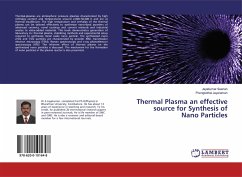Organic semiconductors have long past the stage of a simple idea in the lab. They are now becoming an established part of the semiconductor industry and a viable alternative to their inorganic counterparts. This is especially the case for display and sensor applications, with organics showing superior engineering and physical properties and the potential for easier fabrication methods. It is here that the divide occurs between the synthesis of the materials used in these devices and the fabrication of the devices themselves. This research project aimed to facilitate the bridging of the two through the exploration of a thermal anneal as a viable alternative to previously established solvent-based anneal methods. The focus was on an anthradithiophene derivative, with the results and conclusions quite applicable across a broad range of small organic molecules.
Bitte wählen Sie Ihr Anliegen aus.
Rechnungen
Retourenschein anfordern
Bestellstatus
Storno








